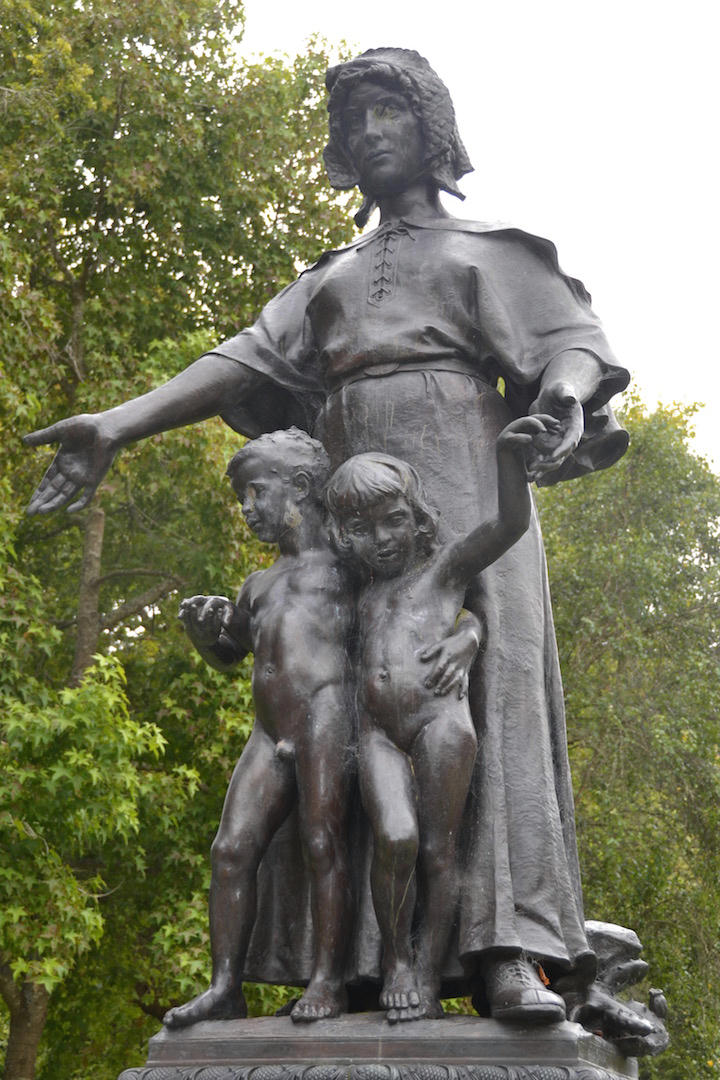
Madeline Stokes was the model for Charles Grafly’s Pioneer Mother Movement statue unveiled at the Panama-Pacific Exhibition in San Francisco in 1915.
Nearly a century before the term “supermodel” was coined, Amanda Straw was living the life of one. Of course, by then, most people knew her by her professional name, Madeline Stokes.
Straw was born in 1875 on a farm in Fishing Creek Valley in northern York County. Unlike the tall, long-legged models of today, Straw stood only 5 feet 4 inches tall. She had hazel eyes, light brown hair, and a figure that epitomized feminine beauty in the 19th century.
After receiving an education in one-room schools in the county, she left for Philadelphia to attend the Pierce Business College. However, she left the school to try her hand on the stage and as an artist’s model.
“One special performance included working on a New York roof-top garden, Jardin De Paris. She was clad head-to-toe in nothing but enamel (Straw later described this as lard) to symbolize a white goddess. That job earned her $5.00,” Valerie Seiber wrote in her article, “The Cover Girl and the Chocolate King.”
Around this time, she changed her name to Madeline Stokes. According to Barb Krebs in the book, Builders and Heroes, Straw chose Madeline Stokes because the initials were the same as Mandy Straw.
Her work as an artist’s model took her across the country where she posed for art students in their classes. She earned $18 for posing in costume and $27 for posing in the nude. According to postcards that she sent home, her time seemed to be very much in demand. “Her ability to hold a pose for long periods of time (up to 25 minutes) made her a sought after model,” Seiber wrote. “In fact, she once posed for a grueling nine hours so that a plaster cast could be made.”
She began to appear on the covers of popular magazines of the like the Ladies Home Journal and Saturday Evening Post. She also worked with well-known artists of the day artists including George Gibbs, N.C. Wyeth, and Alexander Stirling Calder.
“As a favorite model for the most celebrated artists, sculptors and illustrators of her day, she was depicted on magazine covers, calendars, commercial advertising and in statuary,” Ann Corby wrote in Our Hidden Heritage: Pennsylvania Women in History.
Milton and Catherine Hershey commissioned a fountain for their garden in 1910. Sculptor Giuseppe Donato used Straw as a model for the fountain called “Dance of the Eternal Spring.” Hershey paid $2,000 toward the $3,100 project.
“After two years of work, Donato presented Mr. Hershey with the fountain which consisted of three nude dancing nymphs holding an infant aloft and a bill for $31,000,” Seiber wrote. “Ten times the amount Mr. Hershey initially agreed to pay! Mr. Hershey refused delivery of the fountain and it remained crated in storage at the railroad station.”
The case went to court where Donato eventually won a nearly $24,000 settlement. After the trial, Hershey gave the fountain to the City of Harrisburg where it was installed in Reservoir Park.
According to Krebs, some of Straw’s other work included posing for sculptor Stirling Calder when he did the Missouri state symbol, artist Violet Oakley’s murals in the Pennsylvania governor’s reception room, Supreme Court, and Senate chamber, sculptor Charles Grafly’s Pioneer Mother Movement unveiled at the Panama-Pacific Exhibition in San Francisco in 1915.
Straw married artist Albert F. Snyder in 1914 and retired from modeling. They lived near Utica, New York, until Snyder died in 1939. Straw then returned home to Fishing Creek Valley.
In one newspaper article, Straw said of her modeling career, “I enjoyed the art schools the most … and associating with the students.”
She moved to the Homeland Center in Harrisburg in 1955 at the age of 80.
In 1971, Stokes asked the Harrisburg City Council to move the fountain to Italian Lake Park. They consented that is where the fountain still flows today.
You might also enjoy these posts: